What is Arabica Coffee?
Arabica coffee, scientifically named Coffea arabica, is the most popular coffee species, accounting for approximately 70% of global coffee production. The Coffea arabica plant, known for its delicate nature and disease susceptibility, requires specific cultivating conditions.
These beans, often called "the gold standard," have a superior taste and aroma compared to Robusta. They feature fruit notes, floral undertones, and mild acidity, making them a top choice among consumers worldwide.
Arabica Coffee Production
Where is Arabica Coffee Grown?
Arabica coffee thrives in high-altitude regions with mild temperatures, abundant rainfall, and ample shade. Each coffee belt region imparts distinct characteristics to the beans due to its specific climate and soil conditions.
Major Arabica coffee-growing regions include:
- Kenya: Renowned for its bright acidity, full-bodied flavor, and wine-like characteristics.
- Ethiopia: The birthplace of coffee, Ethiopia produces a variety of unique, flavorful Arabica beans.
- Brazil: The largest producer of Arabica coffee, known for its diverse flavors.
- Colombia: Famous for its rich, well-balanced coffee with a smooth finish.
Experience the Gold Standard: Shop Our Premium Arabica Coffee Now! Get Free Shipping on Orders Over $30 Within the US!
Growing Conditions
- Altitude: Arabica coffee thrives at higher altitudes, typically 2,000 to 6,000 feet above sea level. The higher altitude and cooler climate slow the growth of the coffee plant, allowing more time for the beans to develop complex flavors.
- Climate: It prefers cooler temperatures ranging from 60-70°F (15-24°C) and requires a lot of rainfall, around 60-100 inches (1,500-2,500 mm) annually.
- Shade: Arabica coffee plants generally prefer shade-grown conditions, which can protect them from direct sunlight and help maintain soil moisture.
Read more about main types of coffee beans and what sets them apart.
Plant Characteristics
- Physical Appearance: Coffea arabica plants have dark green, glossy, elliptical leaves with pointed tips; small, white, fragrant flowers that grow in clusters and resemble jasmine; cherries that are initially green, turning red or purple when ripe and usually containing two seeds (coffee beans) with branches growing in a horizontal pattern, forming a dense, bushy appearance.
- Sensitivity: Arabica plants are more sensitive to pests, diseases, and harsh weather conditions than Robusta. They are particularly susceptible to coffee leaf rust and coffee berry disease.
- Yield: The plants yield less than Robusta but produce higher-quality beans.
- Growth: Arabica coffee plants can grow up to 8-12 meters tall if left unpruned, though they are usually pruned to around 2- 3 meters to facilitate harvesting.
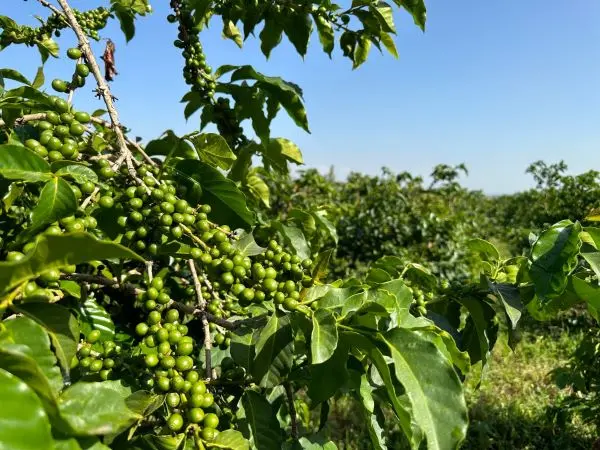
Coffea Arabica in Kenya Solai Coffee Farm
How is Coffee Arabica Cultivated?
Cultivating coffee, particularly Coffea arabica, involves several key steps. It starts with selecting high-quality Arabica seeds or seedlings. These seeds are planted in well-draining soil and kept adequately moist during the initial growth stages. Once the seedlings reach a few inches in height, they are replanted directly into the ground. Regular pruning is essential to maintain plant health and prevent diseases.
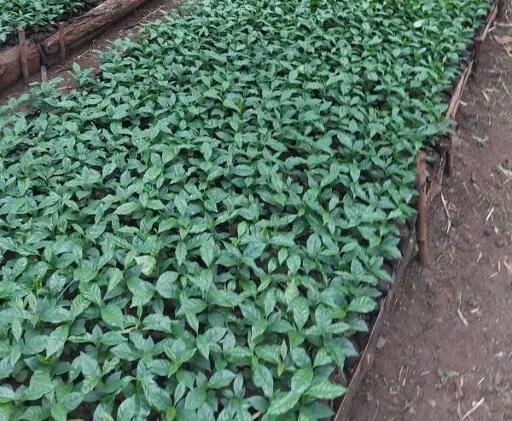
Seedlings
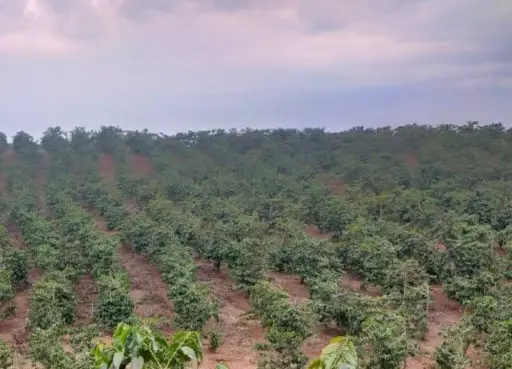
Replanting
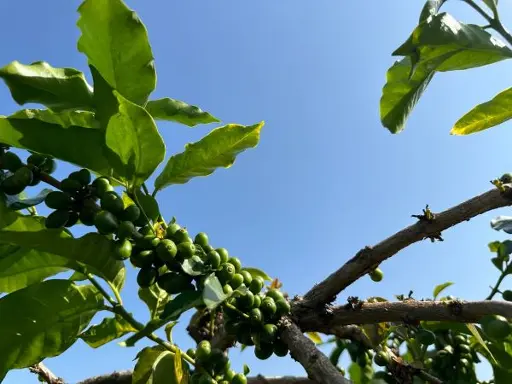
Pruned Coffee tree
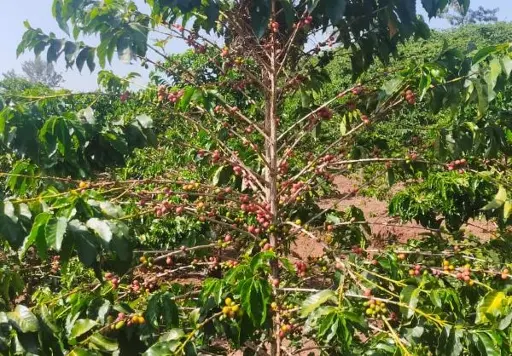
Harvesting ripe (red) cherries
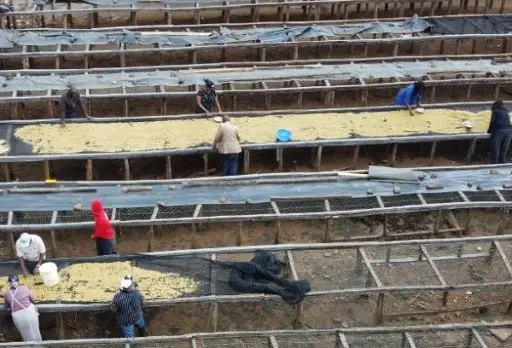
Procesing coffee beans
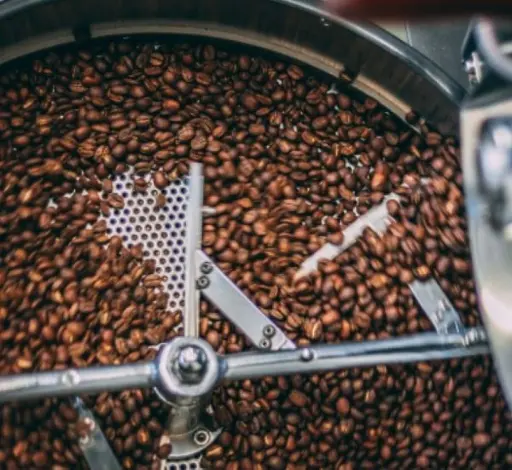
Roasting coffee beans
Coffee cherries are ready for harvesting when they ripen to a bright red. During this stage, the beans inside the cherries are extracted, processed, and dried. This process varies but typically involves washing, natural drying, or fermentation to prepare the coffee beans for roasting.
Each step, from seed selection to harvesting, requires careful management to ensure the quality and flavor of the final coffee product.
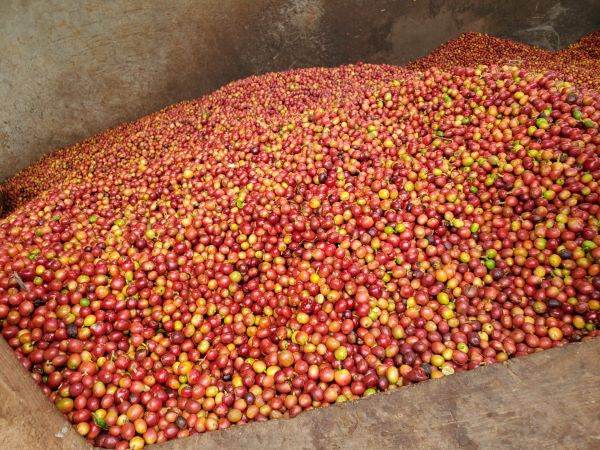
Picked Arabica coffee cherries ready for processing
Arabica Coffee Beans Flavor Profile
- Complex and Varied Taste: Arabica coffee is known for its complex flavor profile, ranging from sweet and fruity to nutty and chocolatey. This diversity in taste is due to the various growing conditions and processing methods.
- Lower Acidity: It typically has a bright acidity, which contributes to its lively flavor, but this can vary depending on the cultivation region.
- Aroma: Arabica beans are aromatic, often exhibiting floral, fruity, and sweet notes.
Physical Characteristics
- Bean Shape: Arabica beans are generally oval-shaped with a curved crease on one side.
- Size: They are usually larger and flatter compared to Robusta beans.
- Color: The beans are often a lighter shade of green before roasting.
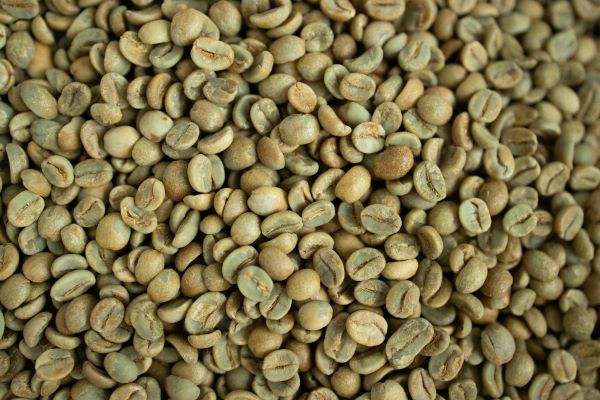
Green arabica coffee beans
Coffea Arabica List and Their Varieties
Arabica coffee beans come in various types, each with unique characteristics influenced by their growing conditions, processing methods, and genetic variations.
There are numerous varieties of Coffea arabica, each offering distinct flavors and characteristics. Some popular varieties include:
SL28 | This variety is known for its excellent cup quality, characterized by bright acidity and bold flavors that often include fruity and wine-like notes. It is also prized for its drought resistance, making it suitable for the varying climatic conditions in Kenya. |
SL34 | Similar to SL28, SL34 is highly regarded for its cup quality, with bright acidity and a balanced flavor profile that can exhibit citrus and berry notes. It is notable for its resistance to diseases, particularly coffee berry disease (CBD), prevalent in many coffee-growing regions. |
Gesha | Originally from Ethiopia but popularized in Panama, Gesha (or Geisha) is renowned for its exotic and complex flavor profile. It often features floral aromas reminiscent of jasmine and delicate notes of tropical fruits like mango and papaya. Gesha coffee typically exhibits a silky, tea-like body with a bright acidity that enhances its elegance and refinement. It is highly sought after and commands premium prices due to its rarity and exceptional cup quality. |
Ruiru 11 | Noted for its disease resistance and high yield, Ruiru 11 is highly resistant to coffee berry disease (CBD) and coffee leaf rust (CLR), making it a robust choice for farmers. The beans are generally smaller and more uniform than other Arabica varieties. |
Batian | Developed in Kenya, Batian stands out for its high productivity and resilience to coffee diseases such as berry disease and leaf rust. It combines good cup quality with robust agronomic traits, making it a preferred choice for sustainable coffee farming in regions prone to these diseases. |
Blue Mountain | Renowned for its smooth, mild flavor with no bitterness, rich aroma, and medium body. It is considered one of the best coffees in the world for its unique taste and exceptional quality. |
Ethiopian Heirloom | Diverse flavors ranging from fruity and floral to spicy and herbal, often with bright acidity and complex aromas, reflecting Ethiopia's genetic diversity and coffee heritage.. |
Typica | Considered one of the oldest coffee varieties, Typica is known for its balanced and clean cup profile. It typically features a medium body with a gentle acidity that enhances its mild yet nuanced flavors. Typica coffee often exhibits citrus notes, floral undertones, and a subtle sweetness. It serves as the genetic base for many other coffee varieties worldwide. |
Bourbon | Originating from the Bourbon Islands (now Réunion), Bourbon coffee is celebrated for its sweet and complex flavor profile. It often offers rich caramel, chocolate, and nut flavors with a smooth, velvety body. Bourbon beans tend to have a lower acidity than other varieties, contributing to their well-rounded and mellow character. This variety is favored by many for its consistently high-quality cup and pleasant drinking experience. |
Sustainability Practices in Arabica Coffee Production
As the demand for Arabica coffee grows, so does the need for sustainable production practices. Organic farming methods and fair trade initiatives are crucial in ensuring the long-term viability of Arabica coffee production.
Organic Farming Methods
Solai Coffee farmers embrace organic farming practices to cultivate Arabica coffee, emphasizing sustainability and worker health. They prioritize environmental stewardship and the preservation of natural ecosystems. This approach safeguards biodiversity and yields high-quality coffee beans renowned for their distinctive flavors.
Visit our impact page
Fair Trade Initiatives
Fairtrade initiatives aim to create more equitable trading conditions for Arabica coffee farmers, ensuring they receive fair prices for their beans and promoting social and environmental sustainability. By supporting Fairtrade coffee, we can both contribute to improving the livelihoods of coffee farmers around the world.
Support Sustainable Coffee Farming – Purchase Coffee near you from Solai Coffee!
Coffee Arabica: The Gold Standard